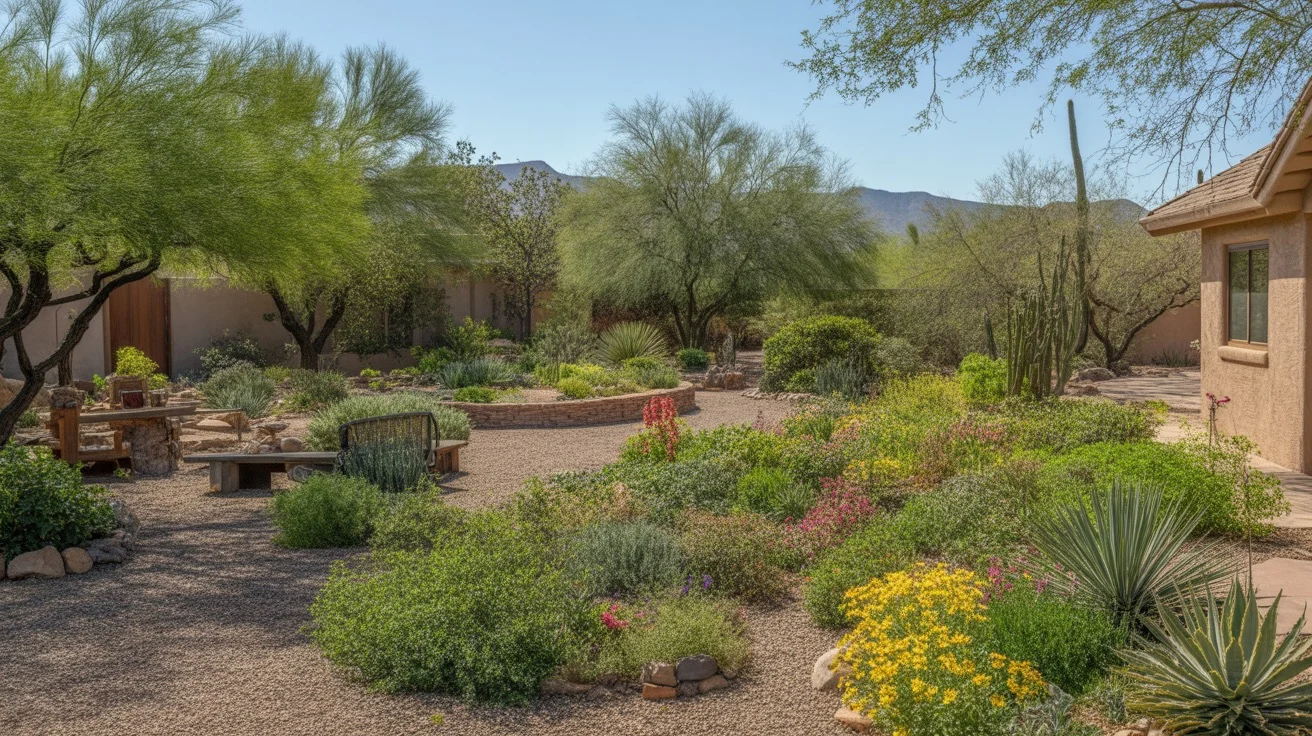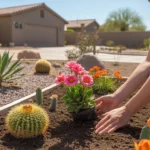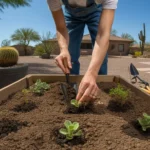Spring has sprung in the Southeast Valley, and it’s the perfect time to give your garden some TLC. With our mild winters and hot summers, spring is a crucial season for setting up your yard for success. Whether you’re a seasoned green thumb or a novice gardener, this ultimate guide will help you revitalize your Southeast Valley garden and create a lush oasis in the desert.
🌱 Prepare Your Soil for Planting
Before you start planting, it’s essential to prep your soil. Southeast Valley soil tends to be alkaline and heavy in clay, which can be challenging for many plants. Amend your soil with compost, peat moss, or other organic matter to improve drainage and nutrient content. Aim for a pH between 6.0 and 7.0 for most plants.
Loosen the soil to a depth of at least 12 inches using a tiller or garden fork. Remove any rocks, roots, or debris. If you’re creating new beds, consider raised planters or mounds to improve drainage. Proper soil preparation will give your spring garden a strong foundation.
🪴 Choose the Right Plants for the Southeast Valley
When selecting plants for your spring garden, it’s crucial to pick varieties that thrive in our unique desert climate. Native and desert-adapted plants are excellent choices, as they require less water and are more resilient to heat and drought. Some top picks for the Southeast Valley include:
- Flowering shrubs like Texas sage, red bird of paradise, and yellow bells
- Perennials such as penstemon, angelita daisy, and desert marigold
- Succulents and cacti like agave, prickly pear, and ocotillo
- Trees such as palo verde, mesquite, and desert willow
Mix in some heat-tolerant annuals like zinnia, vinca, and portulaca for pops of seasonal color. By choosing plants well-suited to our climate, you’ll create a more sustainable and low-maintenance spring garden.
🌻 Plant at the Right Time
Timing is everything when it comes to spring planting in the Southeast Valley. Our last frost date is typically in late February or early March, so it’s safe to plant most frost-tender plants after March 1st. However, you can get a head start on hardy vegetables and annuals in February.
For best results, plant in the early morning or late afternoon to avoid the intense midday heat. Water new plantings deeply and regularly until they establish strong root systems. Apply a layer of mulch around plants to retain moisture and regulate soil temperature.
✂️ Prune and Fertilize Existing Plants

Spring is the ideal time to prune and fertilize your existing trees, shrubs, and perennials. Prune dead, damaged, or crossing branches to promote healthy growth and improve air circulation. Shape plants as needed, but avoid heavy pruning during the heat of summer.
Feed your plants with a balanced, slow-release fertilizer to support lush spring growth. Follow package instructions for application rates and frequency. Avoid over-fertilizing, as this can lead to excessive growth and stress plants during the hot summer months.
💦 Implement Water-Wise Irrigation
As the weather warms up, it’s essential to adjust your irrigation schedule to meet your plants’ changing needs. Deep, infrequent watering is best for most desert plants, as it encourages deep root growth and drought resilience. Check your irrigation system for leaks, broken heads, or clogged emitters and make repairs as needed.
Consider installing a smart controller that adjusts watering based on weather conditions and plant needs. Group plants with similar water requirements together on the same valve to avoid over or under-watering. By using water wisely, you’ll create a healthier, more sustainable spring garden.
🧹 Keep Up with Garden Maintenance
Regular maintenance is key to keeping your spring garden looking its best. Remove weeds before they go to seed, and keep an eye out for pests and diseases. Common spring issues in the Southeast Valley include aphids, whiteflies, and powdery mildew. Address problems promptly with targeted treatments like insecticidal soap or neem oil.
Deadhead spent blooms on annuals and perennials to encourage continuous flowering. Rake up fallen leaves and debris to keep your garden tidy and prevent disease. By staying on top of maintenance tasks, you’ll ensure your spring garden thrives all season long.
With these expert tips, you’re well on your way to creating a stunning spring garden in the Southeast Valley. By preparing your soil, choosing the right plants, planting at the optimal time, pruning and fertilizing, using water wisely, and keeping up with maintenance, you’ll cultivate a lush oasis that’s the envy of the neighborhood. Get ready to enjoy the beauty and bounty of your spring garden!











